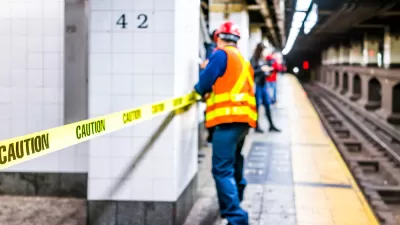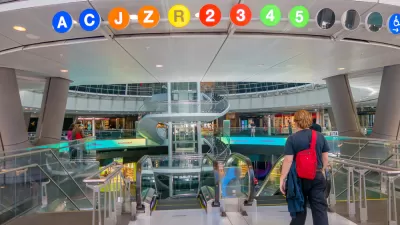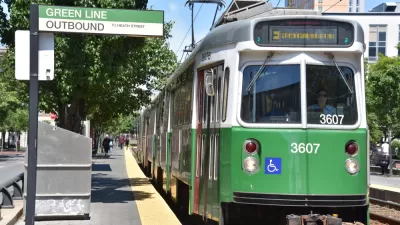The first case study by the Transit Costs Project at New York University's Marron Institute offers a long awaited, and long necessary, glimpse into the bloated costs of construction in the United States.
"Why are American rail projects so costly? The initial results of an ambitious project by three researchers at New York University’s Marron Institute suggest one culprit hiding in plain sight: pointlessly fancy train stations," writes Connor Harris.
The Marron Institute team includes Alon Levy, who spurred some of the first widespread attention to the high costs of transit construction in the United States on the blog Pedestrian Observations before attracting attention from the mainstream media.
Until studies by the Marron Institute and the Eno Center for Transportation, there was a lack of scientistic information about transit spending in the United States.
As detailed by Harris, the team at Marron Institute's first case study focused on the Green Line Extension (GLX) built by the Massachusetts Bay Transportation Authority (MBTA).
"In principle, GLX is simple," writes Harris. "It extends an existing light-rail line 4.3 miles into Boston’s inner suburbs, mostly in a trench that already holds commuter rail tracks. But GLX’s costs ballooned after planning began in 2006, reaching $3 billion in 2015—more expensive per mile than most subways."
As for why the cost for the project ballooned so quickly and so completely, the researchers identified bells and whistles on the line’s seven stations as the source of much of the bloat.
FULL STORY: Why Is American Rail So Costly?

Planetizen Federal Action Tracker
A weekly monitor of how Trump’s orders and actions are impacting planners and planning in America.

Congressman Proposes Bill to Rename DC Metro “Trump Train”
The Make Autorail Great Again Act would withhold federal funding to the system until the Washington Metropolitan Area Transit Authority (WMATA), rebrands as the Washington Metropolitan Authority for Greater Access (WMAGA).

DARTSpace Platform Streamlines Dallas TOD Application Process
The Dallas transit agency hopes a shorter permitting timeline will boost transit-oriented development around rail stations.

Supreme Court Ruling in Pipeline Case Guts Federal Environmental Law
The decision limits the scope of a federal law that mandates extensive environmental impact reviews of energy, infrastructure, and transportation projects.

Texas State Bills to Defund Dallas Transit Die
DART would have seen a 30% service cut, $230M annual losses had the bills survived.

Bikeshare for the Win: Team Pedals to London Cricket Match, Beats Rivals Stuck in Traffic
While their opponents sat in gridlock, England's national cricket team hopped Lime bikes, riding to a 3-0 victory.
Urban Design for Planners 1: Software Tools
This six-course series explores essential urban design concepts using open source software and equips planners with the tools they need to participate fully in the urban design process.
Planning for Universal Design
Learn the tools for implementing Universal Design in planning regulations.
Roanoke Valley-Alleghany Regional Commission
City of Mt Shasta
City of Camden Redevelopment Agency
City of Astoria
Transportation Research & Education Center (TREC) at Portland State University
US High Speed Rail Association
City of Camden Redevelopment Agency
Municipality of Princeton (NJ)





























